Understanding the Cost of Sodding a Yard

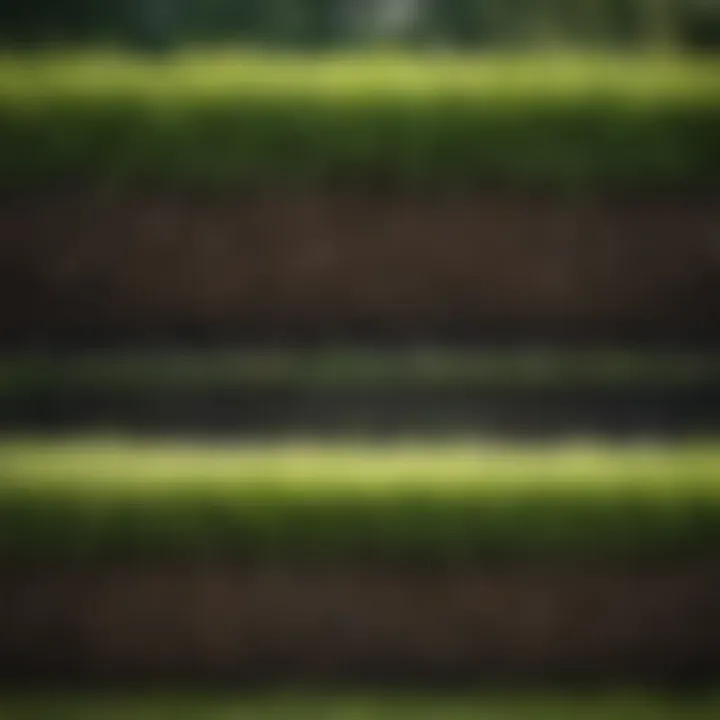
Overview of the Topic
Definition and Importance
Sodding, often referred to as turf installation, involves placing pre-grown grass on a prepared soil surface. This technique is widely favored for its ability to provide an instant green lawn, which can enhance the aesthetic appeal of residential and commercial properties. Understanding the costs associated with sodding is crucial for any property owner, as it encompasses various factors that can significantly impact the overall investment.
When considering sodding, several elements drive the costs. These include the type of sod chosen, site preparation requirements, and regional pricing variations. Additionally, sodding is not a mere one-time expense; ongoing maintenance plays a vital role in sustaining the health and appearance of the lawn. Therefore, budgeting accurately is essential in ensuring a successful sodding project.
Current Trends
Recent trends in landscaping show an increased interest in sustainable and drought-resistant sod types, reflecting environmental concerns. Homeowners are now more aware of their ecological impact and prefer grass varieties that require less water and maintenance. Furthermore, the expansion of online resources allows individuals to access a wealth of information on turf selection and maintenance, empowering homeowners to make informed choices.
Key Techniques and Practices
Step-by-Step Guide
- Assess the Area: Determine the size and conditions of the area to be sodded. This includes evaluating sun exposure, soil type, and drainage.
- Choose the Right Turf: Select a sod type suited to the climate and intended use. Popular options include Kentucky Bluegrass or Bermuda Grass, each with distinct advantages.
- Prepare the Soil: Clear the area of debris, weeds, and old grass. Aerate the soil and test its pH to adjust as necessary with lime or sulfur.
- Lay the Sod: Begin laying sod along a straight edge, staggering the seams to enhance stability. Roll the sod lightly to eliminate air pockets.
- Watering and Maintenance: Water the newly sodded area immediately after installation. Follow up with a routine watering schedule during the first month to establish root growth.
Tools and Equipment Needed
To successfully sod a yard, specific tools and equipment will ensure efficiency and effectiveness:
- Sod cutter
- Rake
- Shovel
- Lawn roller
- Sprinkler or irrigation system
- Soil test kit
Challenges and Solutions
Common Obstacles
Several challenges can arise during the sodding process, potentially affecting the outcome. Weather conditions, such as excessive rain or drought, can impact both the installation and the establishment of the sod. Moreover, improper soil preparation can hinder root growth and lead to problems over time.
Innovative Solutions
Anticipating potential issues can significantly enhance the success of a sodding project. Installing sod during the cooler months can reduce transplant shock from heat. Additionally, utilizing soil amendments and proper irrigation techniques can enhance soil conditions, promoting better sod health. Collaborating with professionals, like landscape architects or sod suppliers, can also provide valuable insights and solutions tailored to specific challenges.
Prologue to Sodding
Sodding is a critical component of landscaping, especially for homeowners and enthusiasts who seek to enhance their yard's visual appeal and functionality. It refers to the process of laying down rolls or slabs of grass, also known as sod, to establish a lush and green lawn quickly. The significance of understanding this process goes beyond aesthetics. It involves several practical considerations that affect both the immediate and long-term outcomes of your landscaping project.
Engaging in the sodding process requires not just an appreciation for the beauty it brings but also an awareness of the methods, costs, and maintenance involved. The cost of sodding a yard can vary significantly based on multiple factors such as the type of sod chosen, preparation needs, and installation techniques. A deep grasp of these elements can inform budgetary decisions, helping to avoid unwanted surprises in landscaping expenses.
By exploring sodding, homeowners can benefit in numerous ways. Aside from the instant gratification of a complete lawn, sodding provides a more controlled environment for grass growth. It reduces the time to achieve a usable space, unlike seeding, which demands patience as seeds germinate and grow. Therefore, understanding sodding can pave the way for informed decisions that align with your horticultural goals.
Defining Sodding
Sodding is defined as the technique of transplanting a mature grass layer along with its roots and soil. This method is distinct from traditional seeding, where grass needs time to establish itself from seed form. Sod is cultivated in controlled environments, which ensures weed-free and disease-resistant grass, resulting in a uniform appearance right from the start. Homeowners often choose this approach for its instant results and reduced risk of erosion compared to seeding.
The process of laying sod involves selecting appropriate turf varieties, preparing the ground, and careful installation. Once laid, sod requires regular watering and basic maintenance to ensure a successful transition, which leads to a healthier lawn over time.
Advantages of Sodding Over Seeding
Sodding offers several distinct advantages compared to traditional seeding. Here are some key points:
- Immediate Results: One of the primary benefits is the rapid establishment of a green lawn. Homeowners can have a functional yard almost instantly, which is ideal for events or gatherings.
- Erosion Control: Since sod is a mature grass with roots, it provides better erosion control than seeding immediately. This can be particularly important on slopes or in areas prone to soil erosion.
- Weed Suppression: Sodded lawns generally have fewer weeds in the beginning, as the pre-grown grass provides competition against weed species.
- Climate Adaptation: Sod can be cultivated from varieties specifically suited to local climates, ensuring better performance and resilience.
- Disease Resistance: Many sod farms use disease-resistant grass types, reducing the likelihood of future lawn diseases.
Factors Affecting the Cost of Sodding
When planning to sod a yard, understanding the various factors that influence costs is crucial. These elements not only affect the initial expenditure but can also have long-term implications for maintenance and health of the lawn. Each decision made regarding the sod type, preparation, installation method, and even regional factors can significantly sway the financial outcome.
Type of Sod Selected
Selecting the appropriate type of sod is a fundamental decision that dictates not only the aesthetic appeal of the lawn but also its overall health and maintenance needs. Different types of grass offer varied characteristics that can align differently with specific environmental conditions and homeowner preferences.
Bermudagrass
Bermudagrass is a popular choice for warm climates due to its robustness and heat tolerance. Its key characteristic is the ability to thrive in full sun and withstand drought conditions. This sod type is well-known for its quick establishment and aggressive growth, leading to a dense lawn. However, Bermudagrass can be invasive, causing it to encroach on flower beds and other areas if not properly managed. This is beneficial for those seeking a hardy lawn but may introduce challenges in maintenance.
Kentucky Bluegrass
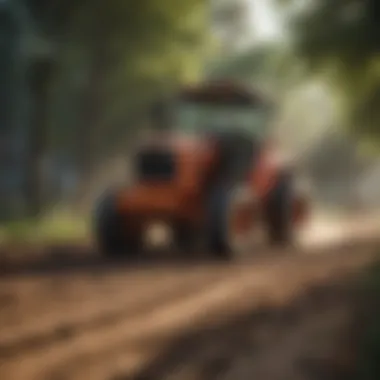
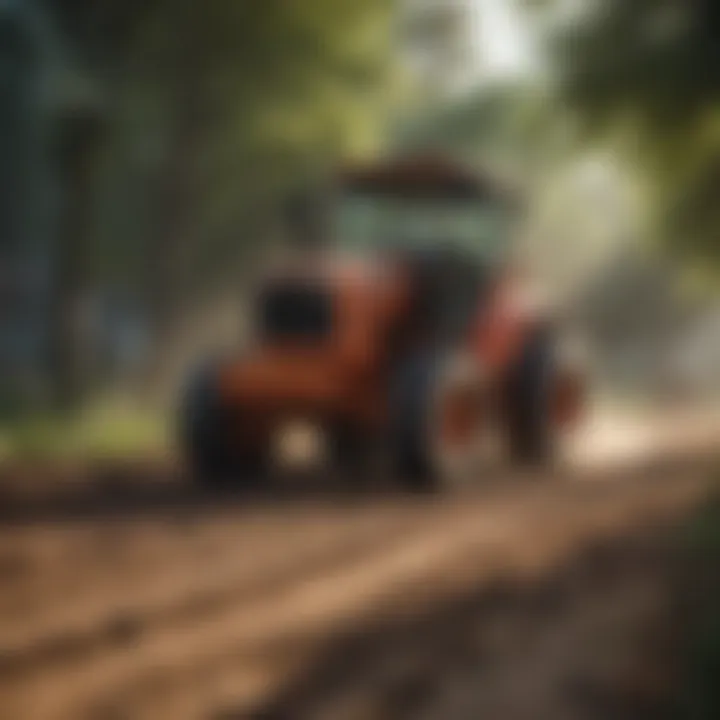
Kentucky Bluegrass is highly regarded for its lush, rich color and soft feel. This sod type is particularly favored in northern climates, offering a striking visual element to lawns. Its key characteristic is its ability to create a thick, durable lawn that withstands foot traffic well. A unique feature of Kentucky Bluegrass is its propensity to self-repair, which benefits those who prioritize a pristine appearance. However, it requires more frequent watering and maintenance, thus impacting the overall project cost.
Fescue
Fescue is often chosen for its shade tolerance and adaptability to various climates. The grass type is known for its deep root system, which enhances drought resistance. Its key characteristic is its versatility, able to thrive in sun and shade equally. Fescue provides a softer texture, making it ideal for family yards. However, it may need more frequent fertilization and upkeep than some other types, possibly affecting long-term costs related to maintenance.
Yard Preparation Requirements
Proper yard preparation is significant for ensuring that the sod takes root well and establishes healthily. Neglecting this crucial step can lead to poor results, costing more in repairs and replacement in the long run. Each yard preparation requirement needs careful consideration in the budgeting phase.
Soil Testing
Soil testing is an essential step in determining the nutrient profile and pH of the soil. The key advantage of soil testing is that it provides valuable insights that guide how to amend the soil before laying sod. This unique feature helps homeowners avoid over-fertilizing and improves sod establishment. Neglecting soil testing can lead to wasted resources and poor growth, raising costs unexpectedly.
Clearing Debris
Clearing debris is necessary to create a clean workspace for sod installation. The process involves removing stones, weeds, and any organic material that may hinder the sod's growth. Its key advantage is minimizing competition for resources, allowing better sod establishment. While this may seem straightforward, skipping this step can result in increased costs due to future maintenance or reinvestment in sod, making it a crucial preparatory phase.
Tilling and Leveling
Tilling and leveling the soil is vital for creating an even surface. This key preparation step assists in proper drainage and root growth. Tilling incorporates organic matter into the soil, enhancing its quality. Failure to level the ground can create uneven surfaces, leading to costly adjustments once the sod is laid, which makes it a critical aspect of preparation.
Installation Methods
The method chosen for installation plays a significant role in the overall cost of sodding. Each option presents unique features, advantages, and potential drawbacks that affect financial and time investments. Therefore, selecting a suitable method is essential.
DIY Installation
DIY installation can seem like an appealing option for homeowners looking to save about costs. The key feature of this method is the potential for a significant cost reduction by eliminating labor charges. Homeowners can take pride in their work and have control over every step of the process. However, the downside is that improper installation can lead to severe issues later, requiring professional intervention, thus negating initial savings.
Professional Installation
Opting for professional installation provides specialized expertise and efficiency. The key advantage is that experienced contractors are likely to deliver a high-quality finish, significantly decreasing the chance of installation errors. Additionally, professionals can ensure that the sod's specific requirements are met. However, this method can increase the overall cost substantially, which is an important consideration for budgeting.
The method of installation can shape both immediate and long-term experiences with the sod. Selecting carefully can impact both satisfaction and financial outcomes.
Cost Breakdown of Sodding a Yard
Understanding the breakdown of costs associated with sodding a yard is crucial. Every aspect from material selection to labor and maintenance has a direct impact on your overall expenditure. By dissecting these costs, homeowners can create a realistic budget. This section will elucidate various cost factors, allowing for informed financial decisions when considering sodding.
Material Costs
Material costs are often the largest component of your sodding budget. This includes both the sod itself and any additional delivery charges that may apply.
Cost per Square Foot
Cost per square foot is a fundamental aspect of understanding material costs. This figure varies by sod type, but it generally represents the most significant portion of your initial expenses. Typically, sod prices range from $0.30 to $1.00 per square foot depending on quality and type.
The main characteristic of cost per square foot is its direct relation to the size of the area being sodded. A larger yard naturally leads to higher overall costs. For this reason, knowing the total square footage of your yard is vital. A beneficial choice for homeowners is to buy in bulk, which can often lead to reduced prices. However, it’s essential to ensure that the sod you purchase suits your local climate and soil conditions.
Advantages include a predictable cost structure, allowing you to plan your budget accordingly. However, buying poor quality sod may lead to hidden costs in the long run due to potential failures.
Delivery Charges
Delivery charges pertain to the cost incurred for having the sod transported to your location. This expense can vary significantly based on your distance from the supplier and the amount of sod you are purchasing. Typically, delivery fees range from $50 to $150.
The key characteristic of delivery charges is their variability based on location and logistics. If you are purchasing sod from a distant supplier, this can notably increase your overall expenditure. For most homeowners, selecting a local provider is a practical and cost-efficient choice. It reduces delivery fees and helps support local businesses.
Unique features of delivery charges include scheduling flexibility. While some suppliers offer free or discounted delivery for large orders, they may have restrictive time slots. Thus, it’s prudent to plan ahead to avoid unexpected fees and delays.
Labor Costs
Labor costs are another critical element in the sodding budget. This can vary whether you opt for DIY methods or professional assistance.
Hourly Rates
Hourly rates for labor can significantly impact your overall costs. Hiring a professional typically costs between $30 to $80 per hour, depending on expertise and local markets.
The notable characteristic of hourly rates is their fluidity. The longer the installation takes, the higher the final cost. If you have an intricate yard requiring careful installation, you should anticipate higher labor costs. The advantage of hiring a professional is their experience, which can lead to an aesthetically pleasing and healthy lawn.
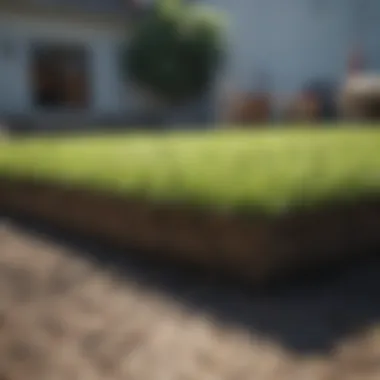

However, relying on professionals may not suit everyone's budget.
Contractor Fees
Contractor fees are flat charges demanded by landscaping services for specific projects. These often range from $500 to $2,000 depending on yard size and complexity.
The key characteristic of contractor fees is predictability. Knowing the total price upfront helps homeowners plan finances without worry of surprise costs. Choosing a reputable contractor can also guarantee quality work and timely delivery of services. Nevertheless, these fees are usually higher than DIY efforts, making it essential to weigh the benefits against your budget.
Maintenance Costs Post-Installation
Understanding post-installation maintenance costs is vital for maintaining the health and appearance of your new sod.
Watering
Watering is a daily necessity after sodding. New sod requires frequent watering to establish roots. This can lead to an increase in utility bills. As a general guideline, new sod should be watered about 2 to 3 times a week, ensuring it remains moist but not soggy.
The characteristic of watering is its importance in ensuring the longevity of your investment. Proper hydration will help maintain vibrant and healthy grass. However, excessive watering may lead to waste and increased costs, thus necessitating careful planning.
Fertilization
Fertilization plays a critical role in establishing a strong sod lawn. Typically, this includes an initial fertilization application followed by monthly treatments, depending on the grass type. The cost can range from $50 to $200 per season based on the fertilizer quality and application methods.
Fertilization’s key benefit is enhancing growth and resilience. A well-fertilized lawn can better withstand diseases and pests, leading to long-term savings. Disadvantages can arise if there is over-fertilization, which can harm grass and the environment.
Pest Management
Pest management is essential for safeguarding your sod investment. Costs can vary widely, ranging from $50 for basic treatments to several hundred dollars for severe infestations.
The key characteristic of pest management is its preventive nature. Regular treatments can save significant amounts by avoiding costly damage to your lawn. While the upfront costs might seem high, they are often less than the expenses incurred from treating extensive damage later.
In summary, the cost breakdown of sodding a yard encompasses various layers from materials to labor and ongoing maintenance. Understanding these elements helps homeowners make educated decisions and anticipate future expenses.
Regional Variations in Sodding Costs
Understanding the regional variations in sodding costs is crucial for anyone considering a sod installation. Different areas face unique characteristics that can significantly affect the price of sod installation. This includes aspects such as climate, local market conditions, and soil type. Below, we explore two important factors that influence these regional variations: climate and market demand.
Influence of Climate
Climate has a profound impact on the types of sod that can thrive in a given region. For instance, warm-season grasses like Bermudagrass are suitable for southern climates, while cool-season grasses like Kentucky Bluegrass flourish in northern zones. Each type of grass comes with its own price point due to varying availability and demand.
In regions that experience harsh winters, sod may need to be specially cultivated to survive. This can increase the initial costs. Similarly, areas with prolonged drought conditions might favor drought-resistant grass, which may also carry a higher price tag. Understanding these nuances helps homeowners anticipate not only the upfront costs but also the longevity and health of their lawns in specific climates.
Market Demand and Supply
Local market demand plays an essential role in determining the cost of sodding. In areas where sodding is a popular landscaping choice, the demand for certain sod types can drive prices up. Conversely, in regions where turf installation is less common, prices may be lower due to decreased demand.
Supply chain factors also contribute to the overall cost. If a region has a limited number of suppliers or if transportation costs are high due to distance from farms, prices may rise. Seasonal fluctuations can also affect availability and pricing, making it essential to consider timing when planning a sodding project.
"When budgeting for sodding, consider both the climate and market conditions in your area to better understand potential costs."
In summary, regional variations in climate and market demand are key factors that influence the costs of sodding a yard. By taking these elements into account, you can make a more informed decision when budgeting for this landscaping project.
Cost-Saving Strategies for Sodding
Implementing cost-saving strategies for sodding is crucial for homeowners looking to create a lush, green yard without overspending. By understanding when and how to sod, what types to choose, and the advantages of doing some work yourself, one can significantly decrease overall expenses while still achieving a quality lawn. Each strategy not only influences the initial financial layout but also impacts long-term maintenance costs and overall satisfaction with the yard.
Timing the Installation
Timing is a key factor when planning for sodding a yard. Correct timing can lead to lower costs and better sod establishment. Spring and early fall are ideal for installing sod as temperatures are moderate, which helps sod take root more efficiently.
Additionally, prices for sod might fluctuate throughout the year. Buying sod during off-peak seasons can offer substantial discounts. It's also beneficial to keep an eye on weather forecasts. Avoiding installation before a heavy rain can reduce the risk of sod washout, which can lead to additional costs.
Choosing Cost-Efficient Sod Types
Selecting the right type of sod is essential to ensure that you are being cost-effective. Different grass types have varying prices, and some are more resilient than others, thereby requiring less maintenance.
For instance:
- Bermudagrass is durable and thrives in hot climates, making it suitable for many regions.
- Kentucky Bluegrass may be more expensive initially but offers lush growth and resilience.
- Fescue has a lower maintenance requirement and adapts well to shady conditions, which can be cost-saving in the long run.
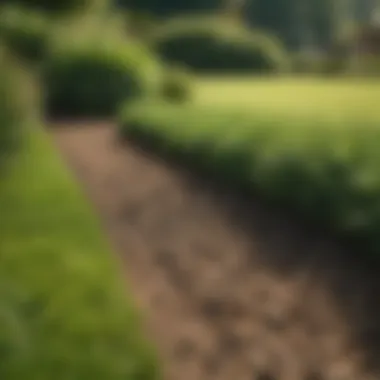
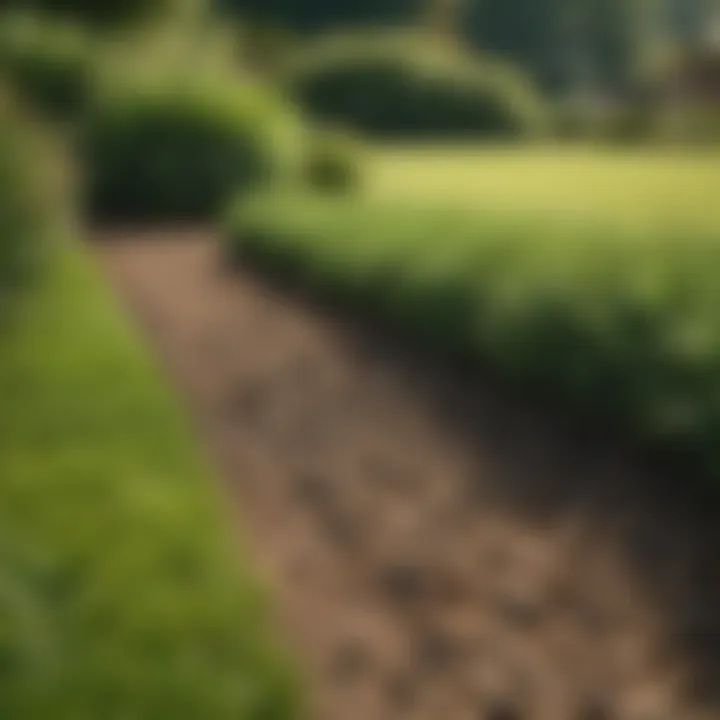
Researching local sod suppliers can also reveal lower-cost options that perform well in your specific climate.
Utilizing DIY Techniques
Do-it-yourself techniques can drastically reduce labor costs associated with sodding a yard. Many homeowners may find they have the necessary skills to prepare their yard and install sod effectively.
- Preparation: This involves soil testing and clearing debris. A DIY approach allows you to control the expenditures on tools and materials.
- Installation: While professional installers may ensure quicker results, a well-informed DIY project can be equally successful if you follow best practices and guidelines found in gardening websites or forums.
In summary, employing these cost-saving strategies can lead to a beautiful, healthy sodded yard without the burden of excessive costs.
Effective planning allows homeowners to enjoy a thriving lawn while minimizing expenditures.
By implementing these strategies, you can effectively reduce the financial impact of sodding and enhance the return on investment for your lawn care endeavors.
Return on Investment Considerations
Evaluating the return on investment (ROI) in sodding your yard involves understanding both immediate and long-term benefits. This section explores these aspects in depth. A well-planned sodding project can lead to significant improvements in aesthetic appeal and property value. Properly assessing these factors can aid in making a sound financial decision regarding lawn investment.
Immediate Aesthetic Value
The visual impact of a freshly sodded lawn is perhaps the most immediate benefit. A lush, green, and healthy sod instantly enhances the curb appeal of any property. Homeowners often seek improved aesthetics before selling their home or simply to enjoy a more pleasant environment.
Having a nice lawn can make a powerful first impression. It draws positive attention from visitors and potential buyers. A well-maintained yard can immediately attract attention and set a favorable tone. This is why many choose to sod rather than seed.
Another aspect of immediate aesthetic value also includes functionality. New sod reduces mud and dust, providing a neat and tidy environment. It encourages outdoor activities and social gatherings. Properly cared-for grass transforms outdoor space into functional living areas without the worry of bare patches or blowing dust.
Long-Term Property Value Enhancement
Long-term property value enhancement is a critical factor when sodding a yard. A healthy, maintained lawn can increase the value of a property significantly, sometimes by several thousand dollars. Studies show that homes with vibrant landscapes often sell for higher prices and move off the market faster.
Investing in quality sod like Kentucky Bluegrass or Bermudagrass can offer enduring benefits. Well-maintained lawns provide essential environmental benefits. They improve local biodiversity and contribute to air quality. Sodding also supports soil and weed management, leading to decreased maintenance costs over time.
Furthermore, a good lawn can reduce energy costs. It helps insulate the home by cooling it naturally. This is especially important in warmer climates. Ultimately, investing in sod can be viewed as a strategic financial decision that adds real value to personal property.
"Investing in sod is not just about the immediate appearance; it’s a long-term investment in your home's value and environment."
Environmental Impacts of Sodding
Understanding the environmental impacts of sodding is crucial for anyone considering this landscaping option. Sodding not only enhances the aesthetic appeal of a property but also offers significant ecological benefits. The act of installing sod can influence water retention, soil quality, and the overall health of the ecosystem. When done correctly, sodding can contribute positively to urban and rural environments.
Water Retention and Erosion Control
Sodding plays a vital role in improving water retention in the soil. Well-established grass roots create a natural barrier that helps hold water in place. This retention is important for sustaining plant life and minimizing the need for ongoing watering, which can save both water and money. Furthermore, the sod acts as a filter, reducing runoff during heavy rains. Without sod, soil can erode quickly, leading to the loss of nutrients and the degradation of local habitats.
To better understand this concept, consider the following benefits:
- Reduced Runoff: Sodded areas absorb rainwater, leading to less puddling and flooding.
- Soil Stabilization: The roots of the grass bind the soil together, preventing erosion on slopes or hills.
- Enhanced Soil Quality: Healthy sod can improve soil structure over time, promoting better drainage.
"The right type of sod can mean the difference between a yard that drains well and one that suffers from erosion issues."
Carbon Sequestration Benefits
Sodding also offers significant carbon sequestration benefits. Grass effectively captures carbon dioxide from the atmosphere and converts it into organic matter through the process of photosynthesis. This action is essential in combating climate change, as it reduces the overall amount of greenhouse gases in the air.
Grasslands, when properly maintained, serve as carbon sinks. This means they can absorb more carbon than they emit. Some key points include:
- Long-Term Storage: Grass and its roots can store carbon for extended periods, contributing to long-lasting ecological benefits.
- Biodiversity Support: Natural sod environments often support a diverse range of plant and animal life, which also assists in carbon capture.
- Climate Regulation: By enhancing carbon storage, sod helps regulate local climates, keeping temperatures in check.
In summary, the environmental impacts of sodding, from water retention to carbon sequestration, are substantial. Making an informed choice about installing sod can lead to not only a healthier yard but also a more sustainable environment.
Finale
The conclusion of this article serves as a critical component, synthesizing the wealth of knowledge presented throughout the discussion on sodding a yard. It reinforces the significant factors that influence costs, notably the type of sod, yard preparation, and installation methods. Understanding these elements not only equips potential sodders with the necessary insight to budget effectively but also highlights the long-term benefits of investing in a well-sodded yard.
Sodding presents various advantages over other lawn establishment methods, including immediate aesthetic appeal and environmental benefits. The deeper engagement with these aspects allows readers to assess their specific needs and goals when it comes to their landscaping decisions.
In an era where environmental considerations are increasingly crucial, maintaining a healthy lawn also contributes positively to local ecosystems. This article delineates how sodding aids in water retention and carbon sequestration, emphasizing that the responsible management of natural resources aligns with modern agricultural practices. Thus, the knowledge accrued from understanding costs associated with sodding proves invaluable for both practical implementation and ecological considerations.
Summary of Key Points
- Understanding Costs: Sodding a yard involves various costs, including material and labor expenses, which can vary widely based on region and sod type.
- Preparation is Key: Proper yard preparation is essential for the successful installation and longevity of sod, incorporating soil testing and clearing debris.
- Maintenance Matters: Post-installation care requires attention to watering, fertilization, and pest management to ensure that the sod establishes itself effectively.
- Environmental Benefits: Sodding supports ecological health through improved water retention and enhanced carbon storage.
- Investment Perspective: Sodded lawns can increase property value and provide immediate aesthetic enhancement.
Final Thoughts on Sodding
Ultimately, the decision to sod a yard should be informed by thorough research and consideration of the various factors involved. Cost assessment is merely the beginning; one must also contemplate the long-lasting benefits, both environmentally and aesthetically. By carefully analyzing the details presented, readers can make judicious decisions that elevate their outdoor spaces. The integration of sod can transform not just a yard, but also contribute positively to one's lifestyle and wellbeing. With strategic planning and understanding, the investment in a sodded lawn pays dividends for years to come.



